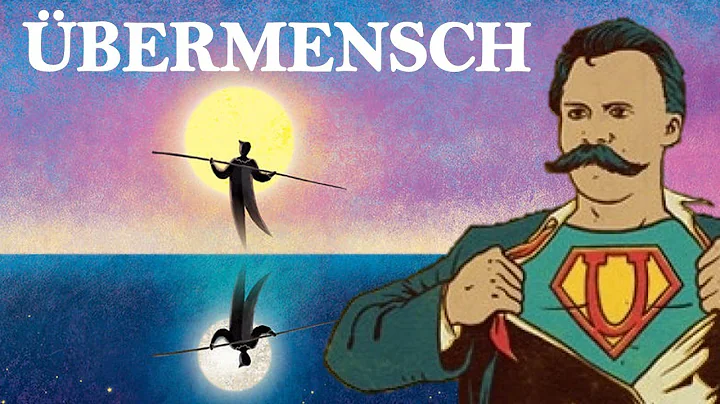Unraveling the Secrets of Meaning: A Guide to Semantics
Table of Contents
- Introduction
- The Limitations of Dictionaries
- The Study of Meaning: Semantics
- The Role of Definitions
- Synonyms and Antonyms
- Hyponyms and Hypernyms
- Semantic Differences in Language
- Cultural Variations in Meaning
- The Evolution of Word Meanings
- The Problem of Polysemy
- Prototype Theory and Meaning
- Function Words and Predicate Calculus
- Other Approaches to Semantics
- The Complexity of Meaning
- Conclusion
👉 The Study of Meaning: Semantics
Meaning is a fundamental aspect of language that allows us to communicate and understand the world around us. But how do we determine what words mean? The traditional approach is to consult the dictionary, but this method has its limitations. In this article, we will explore the field of semantics, which is concerned with the study of meaning in language.
The Limitations of Dictionaries
Dictionaries are valuable resources for understanding the definitions of words. However, they are not infallible. Dictionaries are created by lexicographers, who must rely on other methods to determine word meanings. Furthermore, definitions in dictionaries may not capture all the complexities and nuances of a word's meaning.
The Role of Definitions
Definitions play a crucial role in understanding meaning. They provide clear and concise descriptions of how words are used and their relationships to other words. Definitions help us identify synonyms, antonyms, hyponyms, and hypernyms. Synonyms are words with similar definitions, while antonyms have opposite meanings. Hyponyms are specific members of a broader category, and hypernyms are the broader categories themselves.
For example, the words "happy," "glad," and "joyful" are synonyms because they share a similar definition. Conversely, "inside" and "outside" are antonyms as they have opposite meanings. A specific example of a hyponym is "red," which is a type of "color," while "rabbit" is a type of "animal." These semantic relationships exist across many languages, although the distinction between them may vary.
Semantic Differences in Language
Not all languages draw semantic lines in the same place. For instance, English uses the single word "know" to encompass various meanings, while Polish distinguishes between knowing a fact and knowing a person. Portuguese has a single word, "fazer," that encompasses both "to do" and "to make." Bilingual dictionaries often present multiple translations for a word, making it essential to consider the context and the way a language organizes its semantic space.
The Evolution of Word Meanings
Word meanings can change over time. Words may broaden or narrow their meanings, or even undergo a complete shift in meaning. For example, the word "thing" used to refer to a council or assembly but has evolved to refer to any unspecified object. Similarly, the word "girl" once meant "child" but has become more specific to denote a young female. The evolution of word meaning is driven by various factors, including taboo and the use of euphemisms.
Cultural Variations in Meaning
Meaning can also vary across cultures. Different cultures may assign different meanings to the same word or organize semantic categories differently. For instance, one culture may use a specific word for a concept that requires separate words in another language. Understanding the subtle cultural variations in meaning is crucial for effective communication across cultures.
The Problem of Polysemy
Some words exhibit polysemy, which means they have multiple related meanings. For example, the word "bank" can refer to the side of a river or to a place where money is stored. Resolving the correct meaning of a polysemous word requires context and understanding the intended usage.
Prototype Theory and Meaning
Prototype theory, proposed by psychologist Eleanor Rosch, offers an alternative approach to defining word meanings. According to this theory, our brain does not store precise definitions but rather exemplars or prototypes of a category. These prototypes serve as typical representatives of a category, with other members being more or less central depending on their similarity to the prototype. This theory acknowledges that meaning is not always easily captured by definitions and allows for more flexibility and variation in word meanings.
Function Words and Predicate Calculus
Not all words have prototypes or clear-cut meanings. Function words, such as "the," "of," and "is," serve grammatical functions in a sentence rather than conveying specific semantic content. These words can only be understood in relation to the words they interact with. To describe their functions precisely, scholars use predicate calculus, a branch of formal semantics. Predicate calculus helps identify the relationships between words and determine the truth value of sentences.
Other Approaches to Semantics
Besides prototype theory and predicate calculus, other approaches to semantics exist. Binary Feature Analysis, for instance, focuses on precisely describing words within a taxonomy, such as family members. Natural Semantic Metalanguage breaks down words into more basic units of meaning. Cognitive Semantics explores metaphors that establish connections between abstract concepts and concrete ones.
The Complexity of Meaning
Meaning is a complex and multifaceted aspect of language. Definitions, prototype theory, predicate calculus, and other semantic tools all contribute to our understanding of how words convey meaning. However, meaning is not always fixed or easily articulated, and it may vary across languages, cultures, and contexts.
Conclusion
In this article, we have explored the field of semantics and its role in understanding the complexities of meaning in language. We have discussed the limitations of dictionaries and the need for alternate methods of determining word meanings. From synonyms to antonyms, hyponyms to hypernyms, and the evolution of word meanings, we have delved into various aspects of semantics. By considering prototype theory, function words, and other approaches, we have seen how meaning can be both specific and flexible. Understanding the intricacies of meaning enhances our communication and deepens our appreciation of language.
Highlights
- Dictionaries provide definitions but have limitations in capturing the complexities of word meanings.
- Semantics is the study of meaning in language.
- Definitions help identify synonyms, antonyms, hyponyms, and hypernyms.
- Meanings vary across languages and cultures.
- Words can undergo shifts in meaning over time.
- Prototype theory suggests that word meanings are based on exemplars or prototypes.
- Function words serve grammatical functions and are understood in relation to other words.
- Predicate calculus helps determine the truth value of sentences.
- Other approaches to semantics include Binary Feature Analysis, Natural Semantic Metalanguage, and Cognitive Semantics.
- Meaning is a complex aspect of language that can vary across contexts.
FAQ
Q: How do dictionaries determine word meanings?
A: Dictionaries rely on lexicographers to determine word meanings. Lexicographers use various methods, including analyzing usage patterns and consulting other resources, to create definitions.
Q: Do all languages draw semantic lines in the same place?
A: No, different languages may draw semantic lines differently. Some languages may have distinct words for concepts that require multiple words in other languages.
Q: How can word meanings change over time?
A: Word meanings can change through processes such as broadening, narrowing, or a complete shift in meaning. Taboo and the use of euphemisms can also drive changes in word meanings.
Q: What is polysemy?
A: Polysemy refers to the phenomenon where a word has multiple related meanings. Context and the intended usage help determine the correct meaning of a polysemous word.
Q: How do function words contribute to sentence meaning?
A: Function words, such as "the," "of," and "is," serve grammatical functions in a sentence. Their meanings are dependent on their relationships with other words in the sentence.
Q: Are word meanings the same across different cultures?
A: No, word meanings can vary across cultures. Different cultures may assign different meanings to the same word or organize semantic categories in different ways.
Q: What is prototype theory?
A: Prototype theory suggests that our brain stores exemplars or prototypes of categories, rather than precise definitions. These prototypes serve as typical representatives of a category, with other members being more or less central based on their similarity to the prototype.
Q: How do semantics and syntax intersect?
A: Semantics and syntax are two distinct branches of linguistics. Semantics deals with meaning, while syntax focuses on the structure and arrangement of words in a sentence. However, the two are intricately connected, as the meaning of a sentence is influenced by its grammatical structure.
Q: Are there different approaches to studying semantics?
A: Yes, besides prototype theory and predicate calculus, other approaches to semantics exist. These include Binary Feature Analysis, Natural Semantic Metalanguage, and Cognitive Semantics, each exploring different aspects of meaning.







